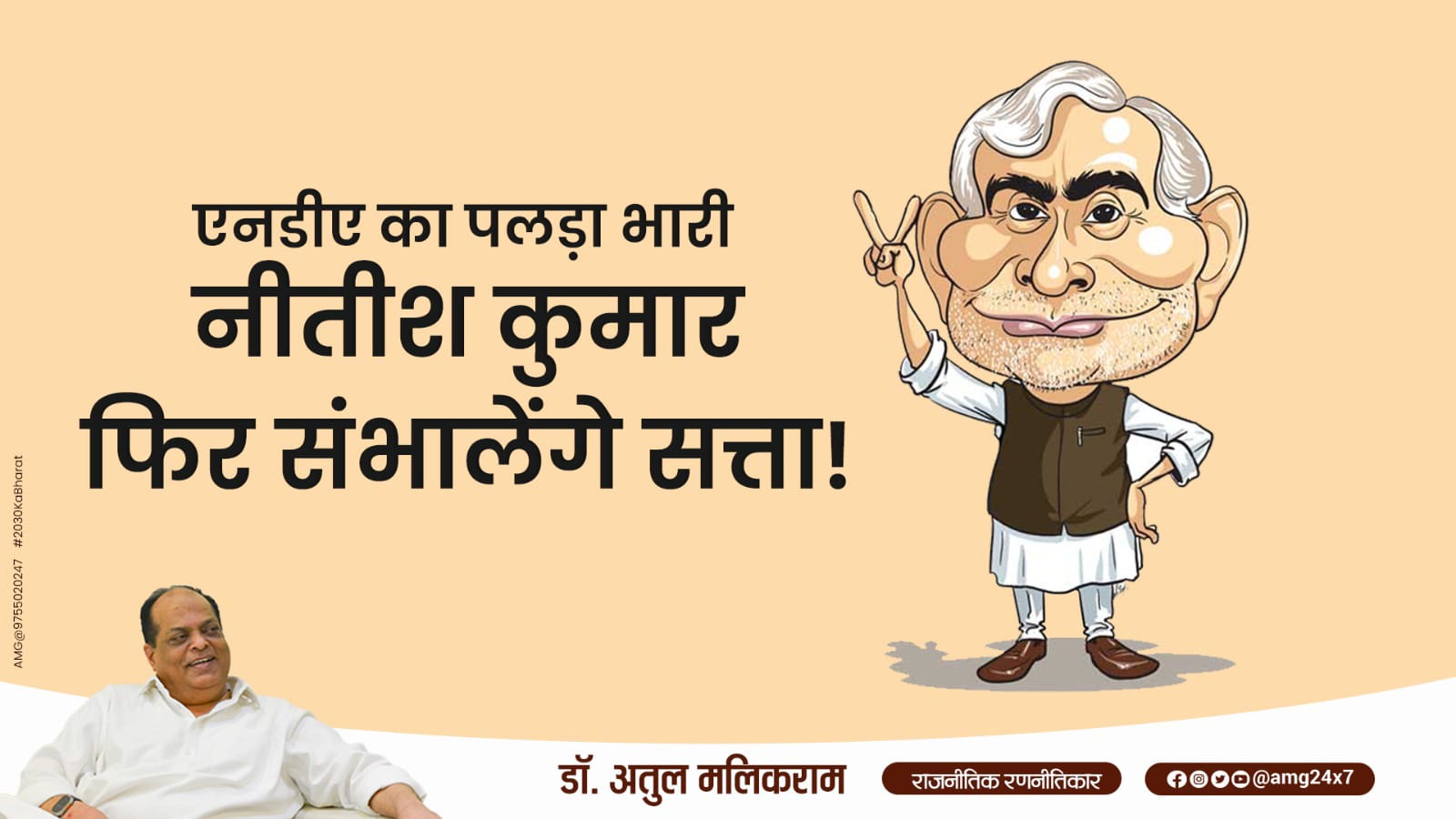Bihar Elections 2025: NDA Set to Retain Power, Nitish Kumar Poised for Fifth Term
By Dr. Atul Malikram (Political Strategist)

The Political Battlefield
Calling the Bihar Assembly Elections 2025 the “mother of all elections” would not be an exaggeration. The contest for 243 assembly seats is not just about the future of Bihar’s government—it will also play a decisive role in shaping the national political landscape.
At stake are the political legacy of Chief Minister Nitish Kumar, the unity of the opposition’s Grand Alliance (Mahagathbandhan), and the future of new yet seasoned strategist Prashant Kishor. With nearly 7.42 crore voters, including 1.4 million first-time voters, the battle is centered around issues of development, unemployment, caste equations, and migration.
Survey Indicates Clear Edge for NDA
Based on my private survey and social media analysis conducted until the second week of October, the National Democratic Alliance (NDA) appears to have the upper hand once again.
Projected seat tally:
NDA: 128–135 seats
Mahagathbandhan: 98–105 seats
Jan Suraj: 12–15 seats
Others: 2–4 seats
If these projections hold true, Nitish Kumar is on course to become Chief Minister for the fifth time, creating a historic milestone in Bihar’s political history.
NDA’s Strength Lies in Unity and Governance Model
NDA’s focus on roads, electricity, and women’s empowerment continues to resonate strongly, especially among women and the Extremely Backward Classes (EBCs). One major reason behind this strength is the smooth seat-sharing arrangement within the alliance.
On October 12, NDA finalized its seat distribution without any internal friction:
BJP: 101 seats
JD(U): 101 seats
LJP (Ram Vilas): 29 seats
Rashtriya Lok Morcha and Hindustani Awam Morcha: 6 seats each
However, the age factor of Nitish Kumar and his occasional awkward behavior on stage have become talking points for opponents, slightly denting his otherwise steady image.
Mahagathbandhan: United Front, Divided Within
The opposition Grand Alliance continues to struggle with seat-sharing disputes and internal disagreements. Their Chief Ministerial face, Tejashwi Yadav, enjoys strong youth connect and has gained traction with his promises of jobs and ending unemployment.
My survey suggests that RJD may secure 60–65 seats, but beyond its traditional Muslim-Yadav (MY) base, the party faces disillusionment among upper castes and other communities. The lingering effect of slogans like “Bhura baal saaf karo” could influence vote distribution once again.
Meanwhile, the AIMIM’s Seemanchal Justice Yatra and its possible alliance with the VIP party might marginally boost opposition strength, but Congress’s dissatisfaction within the alliance remains a major obstacle.
Prashant Kishor’s Jan Suraj: The X-Factor
The emergence of Prashant Kishor’s Jan Suraj Party adds a fascinating twist to this election. According to the JVC poll, Jan Suraj could secure 10–11% vote share and 4–6 seats, but my own findings project 12–15 seats.
By launching his campaign from Raghopur, Kishor has directly challenged Tejashwi Yadav on his home turf—potentially reshaping Bihar’s political narrative.
The Final Verdict: Will Nitish Return Again?
Overall, the surveys point toward a clear majority for the NDA. If results hover around 128–135 seats, Nitish Kumar is likely to return to power for the fifth consecutive term—a remarkable record in itself.
Yet, Bihar’s politics is unpredictable. The interplay of caste, development aspirations, and youth discontent can overturn predictions at the last moment.
The key question remains—will Nitish’s governance model and women-centric policies continue to dominate voter sentiment, or will Tejashwi Yadav’s promise of employment swing the tide?
The answer will be known on November 14, when Bihar’s mandate finally unfolds.
साभार :
© CopyRight Pressnote.in | A Avid Web Solutions Venture.






